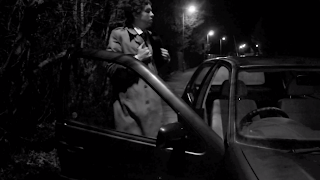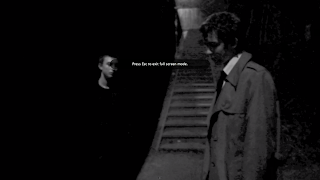- In what ways does your media product use, develop or challenge forms and conventions of real media products?
Noire and Horror share many cinema-graphic conventions such as the representation of dark, enclosed environments and strong stereotypical main characters. Some of the common themes of Horror and Noire are also shared, such as death, violence and murder as well as the conventions of production such as ominous music, editing and narrative structure which create a mystery and enigma for their audience. Although 'The Big Sleep' (1946) may seem to be a great contrast to 'Frankenstein' (1931) they both contain many of these elements, for instance the dark lighting and chilling music. However there are differences; the soundtrack for a Noire film is often a lot more targeted at the mood and tone of the different scenes. This genre was dominant during the 1940s and 1950s when sound technology in films was more sophisticated than immediately after the silent era. In our production task we used predominately jazz songs from artists such as Miles Davis, mimicking such classic film Noire soundtracks as Davis's score for 'Lift to the Scaffold' (1958).
 We generally adhered to other conventions of the Noire/Horror genre by representing the classic characters of the genres, for example the 'victim good guy’ and the ‘archetypical murderer’, as well as employing enigmas by showing the murderer's face in the dark whilst the detective, who represents the moral core, was in the foreground in the light (image above), symbolising the contrast in character between himself and the villain (image below). We used iconography similar to that of other Noire films. These included the location; dark alleyways which were filming using little non- diegetic lighting as illumination comes from the elements in the scene, such as sweeping car headlights and the sharp contrast in light and dark created by street lighting( look for example film).
We generally adhered to other conventions of the Noire/Horror genre by representing the classic characters of the genres, for example the 'victim good guy’ and the ‘archetypical murderer’, as well as employing enigmas by showing the murderer's face in the dark whilst the detective, who represents the moral core, was in the foreground in the light (image above), symbolising the contrast in character between himself and the villain (image below). We used iconography similar to that of other Noire films. These included the location; dark alleyways which were filming using little non- diegetic lighting as illumination comes from the elements in the scene, such as sweeping car headlights and the sharp contrast in light and dark created by street lighting( look for example film).  However to be more creative we didn’t stick rigidly to conventions. One example of this is that we used a contemporary and more enigmatic storyline. Conventional Noire films are not only literally in black and white, their plots follow a clear-cut narrative structure of exposition, development, complication, crisis and resolution (see Tudorov). Our film 'The Hard Way', employs a flashback and two main characters who have similar personalities. It is also set in the present time involving modern cars and modern weapons. It is still shot in black and white, however.
However to be more creative we didn’t stick rigidly to conventions. One example of this is that we used a contemporary and more enigmatic storyline. Conventional Noire films are not only literally in black and white, their plots follow a clear-cut narrative structure of exposition, development, complication, crisis and resolution (see Tudorov). Our film 'The Hard Way', employs a flashback and two main characters who have similar personalities. It is also set in the present time involving modern cars and modern weapons. It is still shot in black and white, however.
No comments:
Post a Comment